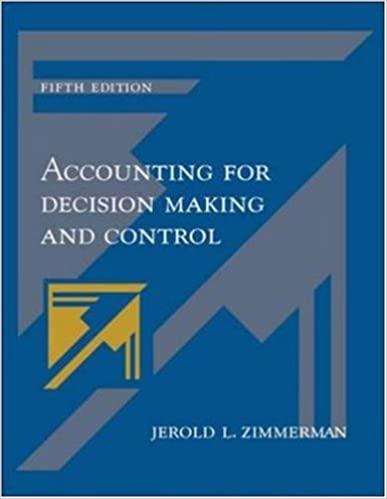Question
QUESTION: This article contains an important consideration in accounting for depreciation. Do you agree or disagree with the authors' perspective? Support your position by stating
QUESTION: This article contains an important consideration in accounting for depreciation. Do you agree or disagree with the authors' perspective? Support your position by stating why you believe your assessment is relevant.
ARTICLE
2.1. Why people may believe public housing depreciates nearby housing prices
Strong community opposition to public housing developments has been an urgent issue for Korean planners and housing developers; for instance, around 80% of public housing developments15 projects out of the total 18 projectsbetween 2017 and 2018 in Seoul has faced the implacable opposition of residents reflecting their fear of housing price depreciation in neighborhoods (Seoul Housing & Communities Corporation, 2018). Because public housing has distinct physical and sociodemographic characteristics compared to other rental housing units, public housing developments may change the environmental and sociodemographic attributes of neighborhoods. Furthermore, such changes can be positively or negatively capitalized into neighboring housing prices (Baum-Snow & Marion, 2009). The negative characteristics of public housing may shape residents' perception of public housing developments, and thereby increasing concerns of housing price depreciation.
In terms of the physical characteristics of public housing, public housing units are often poorly designed and built as high-rise and homogeneous residential enclaves, causing negative aesthetic and visual impacts on the neighborhood (Deng, 2007; Lee et al., 2017; Rohe & Freeman, 2001; Schill et al., 2002; Suh et al., 2004). These stereotypical images of public housing may lead to neighbors' negative perceptions of public housing, and fear of adjacent housing price depreciation (Ellen et al., 2007). However, recent studies have suggested that public housing may have positive impacts on neighboring housing prices due to public housing developments spurring neighborhood revitalization by improving physical environments and removing inadequate amenities (Kim & Lee, 2008; Koschinsky, 2009; Schwartz et al., 2006; Woo et al., 2016b). This is reflected in the improved quality of public housing in Korea in recent decades as planners and housing developers have made every effort to counter traditional images of public housing and to mitigate NIMBY attitudes in neighborhoods. Well-designed underground parking lots, community facilities, and landscaping in public housing complexes have somewhat alleviated gaps in physical environmental conditions between public housing and neighboring sites (see Fig. 1) (Bang & Park, 2017). However, beyond such anecdotal inference, there is no empirical evidence on whether improved design and quality of public housing may improve neighbors' perceptions of public housing and alleviate concerns of housing price depreciation. This study explores this topic further by examining the associations between individual perceptions of physical images on public housing and concerns of surrounding housing price depreciation. s public housing units are largely occupied by socioeconomically marginalized populations, public housing developments often lead to the concentration of poverty in communities (Newman & Schnare, 1997; Oakley, 2008; Rohe & Freeman, 2001); particularly, public housing in Seoul is usually occupied by households with incomes below 70% of the average monthly income level of city workers (Korea Research Institute for Human Settlements, 2013). Hence, public housing developments may result in socioeconomic tensions with surrounding residents and aggravate concerns of social disorder in communities, such as increased neighborhood crime, illegal dumping, vandalism, harassing pedestrians, and other disamenities as well as declines of education quality (Freeman & Botein, 2002; Kim et al., 2005; Rohe & Burby, 1988; Woo & Joh, 2015). These concerns of potential social environmental changes from the introduction of public housing into communities may exacerbate fears of housing price depreciation and promote NIMBY attitudes among neighboring residents. Unfortunately, Korean policymakers and housing developers have tended to locate public housing developments in marginalized neighborhoods to avoid conflicts between public housing tenants and neighboring residents in addition to reducing NIMBY opposition to such developments, rather than promoting housing and socioeconomic integration. However, there is a growing consensus that mixed income developments with the provision of public housing in middle income and affluent neighborhoods should be encouraged to ensure equitable access to various neighborhood amenities and opportunities for assisted households to promote poverty deconcentration (Crowley, 2003; Oakley, 2008; Van Zandt & Mhatre, 2009; Woo & Kim, 2016; Woo & Yu, 2017). Furthermore, many believe that mixed income developments may reduce socioeconomic costs and contribute to sustainable community development by encouraging long-term social integration in neighborhoods (Joseph et al., 2007; Kim et al., 2005).
Many empirical studies have theoretically suggested the significance of positive environmental changes and mixed income approaches for public housing developments to mitigate concerns of housing price depreciation and to successfully implement public housing in communities (Baum-Snow & Marion, 2009; Kim et al., 2005; Kim & Lee, 2008; Schwartz et al., 2006). However, we have a limited understanding of whether perceived environmental changes and income mixing alleviate concerns of housing price depreciation due to public housing developments. To address this gap, this empirical study examines how individual perception of environmental changes and mixed income developments from the construction of public housing may be correlated with the fear of housing price depreciation. Our research may provide useful insights on how individual perceptions of public housing may impact concerns of housing price depreciation and how policymakers and planners may develop tailored and targeted strategies to defuse NIMBY attitudes.
Step by Step Solution
There are 3 Steps involved in it
Step: 1

Get Instant Access to Expert-Tailored Solutions
See step-by-step solutions with expert insights and AI powered tools for academic success
Step: 2

Step: 3

Ace Your Homework with AI
Get the answers you need in no time with our AI-driven, step-by-step assistance
Get Started


